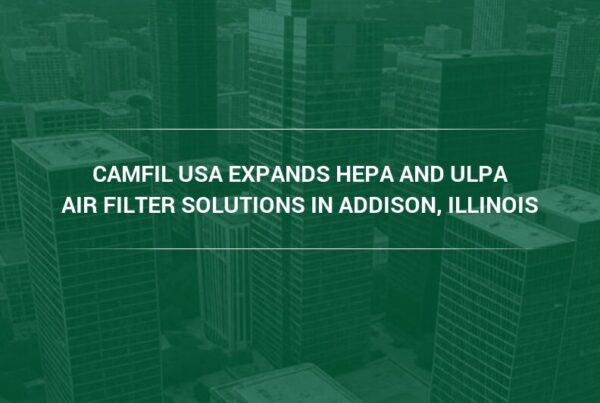Studies have shown that high-efficiency air filters can improve air quality, and help prevent lung cancer and heart disease. But how exactly are these filters rated for efficiency?
When you hear the term ‘high-efficiency air filter’ what do you think? Like most people, you probably think of hard-working filters that can improve the air you breathe, and that’s true. But do you understand how a filter achieves high-efficiency? Or what that phrase even means?
This is important is because without understanding the basic standards of air filter efficiency, you won’t understand how to shop for the best filters, or what the terminology companies often use really means. With that in mind, let’s look at how high-efficiency filters are measured, and why they are so important in the fight to improve indoor air quality.
Explaining the MERV Standard
Explaining the Minimum Efficiency Reporting Value (MERV) standard is a good place to start, because this is the standard established by the American Society of Heating Refrigeration and Air Conditioning Engineers (ASHRAE), which oversees the air filtration industry.
According to the National Air Filtration Association (NAFA), MERV is based on a scale from 1 to 16, and measures an air filter’s capacity to trap particles from the air based on three different size ranges.
Within each of these three size ranges, there are four sub-ranges, so air filters are really measured against a total of 12 different size ranges. The 16-point scale works in ascending order, so the higher the MERV rating, and the greater the efficiency of the air filter. (1)
The problem with the MERV standard is that the measurements don’t follow strict logic. For example, you would assume that an air filter rated a MERV 8 would capture 50 percent of all airborne particles, but a MERV-8 filter is only rated to trap about five percent of harmful particles.
That’s because the 16-point scale doesn’t work in exact accordance with logical percentages, so it’s difficult for consumers to know just how efficient their air filters are based on the MERV point system.
The New ISO 16890 Standard Changes the Game
This confusion regarding MERV is not the only reason air filter efficiency ratings are difficult to understand. Another reason is that the U.S. is on a different standard than countries in Europe, which means consumers cannot make valid comparisons about air filter efficiency.
That’s why the new ISO 16890 Standard changes the game for consumers and manufacturers of air filters.
It levels the playing field, so that consumers can now judge every air filter manufacturer based on the same set of standards throughout the world.
According to the International Organization for Standardization (ISO), ISO 16890 is the first high-efficiency air filter standard based on a filter’s ability to trap particulate matter (PM) consistent with values published by air quality authorities, pollutants identified as the most harmful to human health. (2)
According to the Centers for Disease Control (CDC), PM is created from a variety of sources such as vehicle exhaust emissions, power plant emissions, coal-burning and wood stoves. (3) Long-term exposure to PM has been linked to eye irritation, difficulty breathing, and lung cancer, and heart disease.
The new standard measures how well air filters trap PM10, PM2.5 and PM1 levels, so unlike previous standards, there are only three size ranges and three pollutants being measured.
The 10, 2.5 and 1 designations refer to the diameter of particulate matter in micrometers, and these three sizes are the most harmful because their microscopic size makes them easy to swallow or inhale.
“The new ISO 16890 standard is a game-changer for the air filtration industry,” stated Kevin Wood, Camfil USA Vice President Sales & Marketing. “Until this point, there had never been a global standard for high-efficiency air filters. Therefore, air filter consumers could not decide which filter was superior, because different countries were operating under different standards. With ISO 16890, consumers can make valid comparisons between air filters, especially since PM remains the biggest health threat to indoor air quality.”
Particulate Matter Prevention Methods
The fact that high-efficiency air filters are now being measured based on PM is important because these pollutants pose the biggest risk to human health. Some of the PM prevention methods you can take, include:
Check the U.S. Environmental Protection Agency (EPA) Air Quality Index – this is a daily listing that tells you the air quality in your area, and how harmful it could be, especially to people with respiratory problems such as asthma.
Limit outdoor activities on days when PM levels are elevated.
Limit the time you spend on busy streets to lower your exposure to vehicle emissions
Invest in high-efficiency air filters using the ISO Standard to ensure you are removing the most harmful particles of concern.
For more than 50 years, Camfil has been the industry leader in commercial air filtration, and with that leadership comes a desire to ensure that efficiency standards continue to evolve. Camfil’s driving principle is providing quality at an affordable price, and the company’s guiding principle is that clean air should be every human’s right.

Other Resources for you
- To learn about HEPA Filters Previous blog post
- Read our blog post: How to Prevent Lackluster Air Quality
Lynne Laake
Camfil USA Air Filters
T: 888.599.6620
E: Lynne.Laake@camfil.com
F: Friend Camfil USA on Facebook
T: Follow Camfil USA on Twitter
Y: Watch Camfil Videos on YouTube
L: FL: Follow our LinkedIn Page
SOURCE Camfil.us
SOURCES
- https://www.nafahq.org/understanding-merv/
- https://www.iso.org/obp/ui/#iso:std:iso:16890:-1:ed-1:v1:en
- https://www.cdc.gov/air/particulate_matter.html



